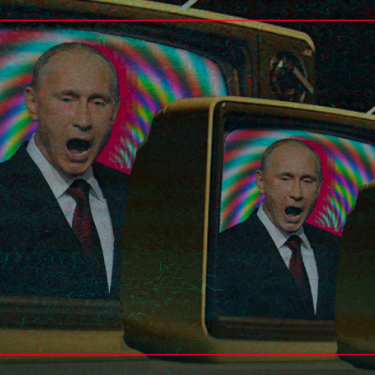Ten years of war in Donetsk and Luhansk: the disappearance of independent journalism and the proliferation of Russian propaganda media

Ten years after the ‘referendums’ of 11 May 2014 orchestrated by Russia to proclaim the ‘independence’ of part of the eastern regions of Ukraine, the independent media have disappeared in favour of those relaying the Kremlin's narrative. Journalists who refuse to collaborate are threatened and arrested, and many have chosen to leave the occupied territories. Reporters Without Borders (RSF) condemns the total destruction of independent information.
“This is a terrible anniversary: for ten years, the inhabitants of Donetsk and Luhansk have lacked access to freely reported, pluralistic and reliable news coverage. The occupation authorities have systematically silenced independent media and journalists, and replaced them with Kremlin relays. They began by controlling the local media. Then they opened up their own propaganda relays after Russia’s large-scale invasion of Ukraine in February 2022. RSF is appalled by the disappearance of independent journalism, which has left these regions’ inhabitants at the mercy of disinformation.
Portraits of residents hailing their lives under Russian occupation and stories about the economic boom since the illegal annexation are typical topics of the local news coverage that Novoe.Media (“The New Media”) provides in the Russian occupied Donetsk, Luhansk, Kherson and Mariupol regions. Launched on 11 April this online media outlet feeds the Kremlin's narrative to the inhabitants of eastern and southeastern Ukraine every day.
Novoe.Media has joined the long list of Russian propaganda media that have controlled the media landscape in Donetsk and Luhansk since 2014. Founded by the “National Cultural Action Centre,” an organisation funded by Russian government agencies, Novoe.Media will eventually have around 20 local editorial offices. Its editorial team is led by Larisa Ryzhova, a Russian blogger and propagandist who runs the pro-Kremlin Telegram channel Dorogaya Hurma with more than 140,000 followers.
Occupying the news arena
The “Luhansk People’s Republic” has had more than 200 Russian-controlled media outlets since 2019 while the “Donetsk People’s Republic” has had around 30. The “local authorities” also took over pre-existing Ukrainian media such as Union TV, which was turned into a Russia propaganda relay in 2014.
The occupation of the news media landscape has intensified since Russia’s full-scale invasion in February 2022. Media from the Russian Federation have also officially established themselves in Donetsk and Luhansk. They include the Russian state radio and TV broadcaster VGTRK, which opened a subsidiary in Donetsk in September 2023. Some of these channels are accessible between 20 and 50 kilometreskilometers within the territory controlled by the Ukrainian government, on the other side of the front line.
Arrests of journalists and departures
The local Ukrainian journalists who have been arrested for refusing to cooperate with pro-Kremlin media include such as Stanislav Aseyev, a correspondent of the US broadcaster Radio Free Europe/Radio Liberty (RFE/RL). Following his abduction in Donetsk in 2017, he was detained and tortured for nearly two years for “espionage,” until released as part of a prisoner exchange in 2019. In January 2024, the Ukrainian court system passed a 15-year prison sentence on his torturer.
Some local media outlets in the regions occupied by Russia for the past ten years relocated to other parts of Ukraine. They include the editorial staff of Realna Gazeta, an outlet that was based in Luhansk. They fled the city in July 2014. The media outlet is now registered in Kyiv, from where the editorial staff continue to cover the news in eastern Ukraine using information provided by local sources. Russia has nonetheless tightened its grip on the inhabitants of these regions since its largescale 2022 invasion, limiting the information getting out.
Russia continues to reinforce its control over reporting in the occupied Ukrainian regions by opening “journalism” schools and developing pro-Kremlin media. To combat propaganda and provide reliable and independent reporting, RSF launched the Svoboda satellite package in March 2024, which broadcasts independent media content to Russian-speakers in eastern Europe, including in Ukraine’s occupied territories.
